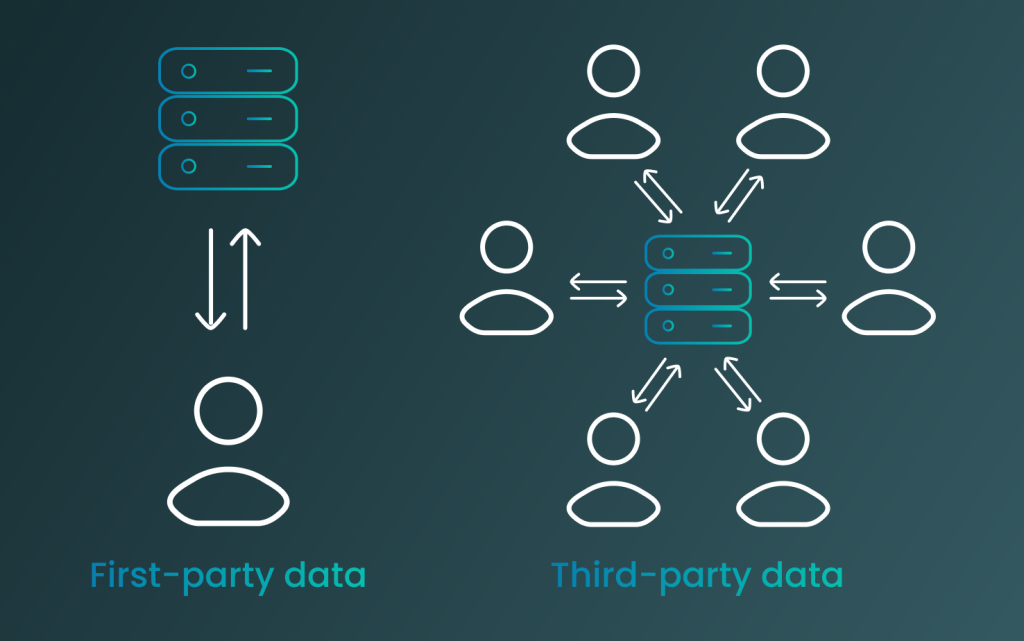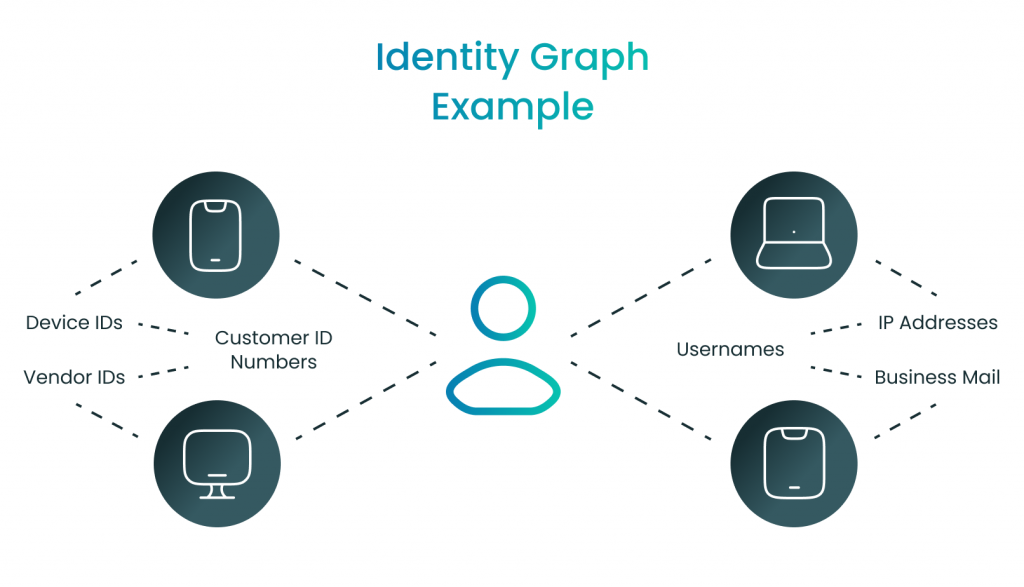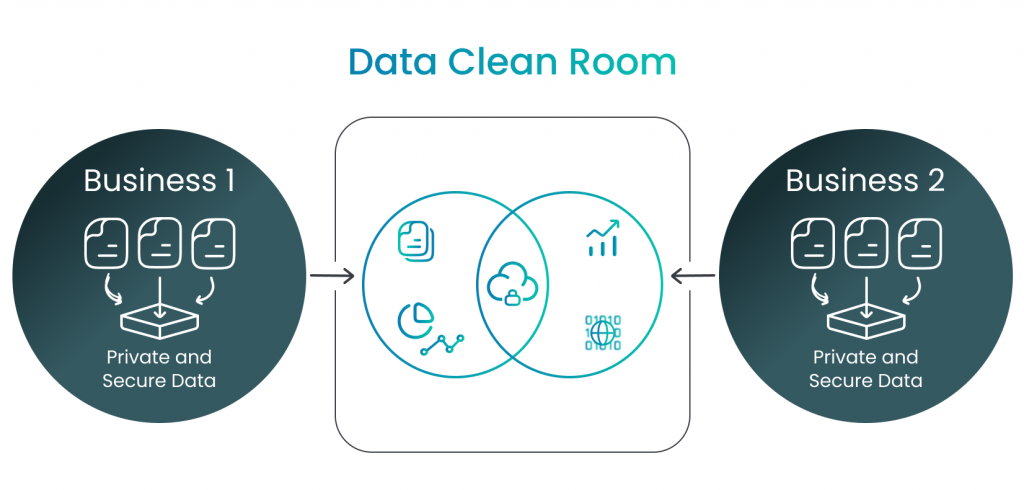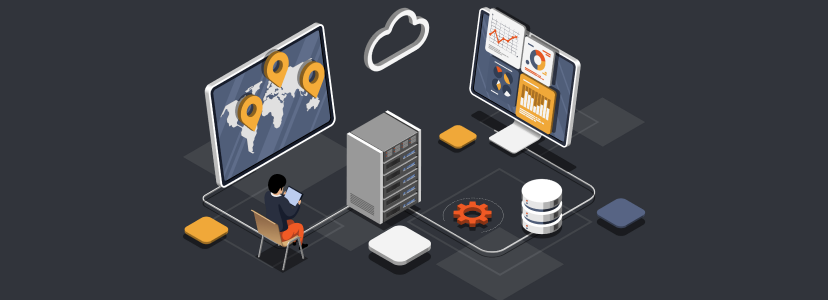Not every user who “accepts cookies” while surfing the net fully understands the role of these cookies (and what they are). Nevertheless, digital advertisers cannot avoid this knowledge. Modern advertising still dramatically relies on third-party cookies to collect user data, which is not the best thing from the user privacy perspective.
Despite some previously voiced plans, third-party cookies will stay with us longer. Earlier, Google set and postponed several deadlines to block third-party cookies on Chrome by default. According to the information, it had to happen by the end of 2024. But now, the plans have changed. Instead of deprecating third-party cookies, Google will let Chrome users make more informed choices regarding sharing their data.
Nevertheless, saying “no” to using cookies is not something extraordinary new. Privacy-focused browsers such as Safari, Firefox, and Brave have been doing this for a while already.
Though the cookieless future is not coming, privacy-related concerns are a high priority. Given this, marketers and advertisers need to adjust their data collection and processing methods to ensure the necessary protection of users’ sensitive data. New approaches will help avoid further severe changes in the cookies field.
Shift Away from Third-Party Cookies: Why is It Important?
Before talking about the impact of cookieless future on the AdTech and advertising industry, it’s vital to focus on the theoretical basics.
What are third-party cookies? And what is wrong with them?
Advertisers and other third-party service providers generally use the collected data to track users across different websites. Based on this information, they can better understand users’ browsing habits and deliver targeted advertisements.
Today, the use of third-party cookies is considered irrelevant in a privacy-focused world. That’s why Google was considering joining the “cookieless camp.”
What does it mean to be cookieless?
But why are third-party cookies so widely criticized? Critical concerns about third-party cookies:
- Privacy issues. The main concern is privacy. With third-party cookies, companies can collect a lot of user data without their explicit consent. It’s important to highlight that users may often remain unaware of this. The collected data can also include sensitive information for creating detailed user profiles.
- Data security. The collection and storage of personal data by multiple third parties can be somewhat risky, while data breaches remain a serious threat. If the storage of a third-party service provider is hacked, user data can become publicly available or be used by criminals in various illegal activities.
- Lack of transparency. Even when users consciously accept cookies, many details may be hidden. People must often learn how much they are being tracked, who is collecting information about them, and what their data is used for.
- Browser performance. The use of third-party cookies can harm the performance of web browsers. As a result, users can face slower page load times and higher resource consumption.
Today, regulators worldwide are intensely preoccupied with how users’ data is collected and processed. That’s why we can observe some changes introduced to the legislative system. Such laws as the General Data Protection Regulation (GDPR) in the European Union and the California Consumer Privacy Act (CCPA) in the United States aim to give people more control over their data and increase transparency around data collection and usage practices.
All these changes look like a positive trend. However, a group of market participants may not be pleased about such updates because they may have a severe influence on their work. We are talking about advertisers.
Third-party cookies have been a potent booster for online advertising and analytics growth. But what’s next? Will it still be possible to entirely rely on them if they are not phased out, at least for now? AdTech companies and advertisers have quite a lot of questions at the moment.
Our specialists have outstanding AdTech expertise and will always be ready to join your project!
What is Cookieless Future?
This term is relatively simple to explain. It refers to a shift in web technologies and advertising practices away from the reliance on third-party cookies for tracking and targeting users.
However, it’s essential to understand what the cookieless future will mean for digital marketing if it finally comes one day. Will advertisers be left in the dark due to the lack of user information? Definitely not. Nevertheless, all these changes will have an impact on how businesses will conduct user tracking, how they will analyze user behavior, how they will target and retarget ads, and how leads will be generated.
Even though third-party cookies are still here to stay, advertisers must adjust their strategies and tools to a more privacy-centric approach. And that’s exactly what we are going to discuss further in our article.
New Focus: Cookieless First Party Data
In the new reality, companies will greatly rely on first-party data amid criticism of third-party sources for information about users. This data will be collected directly from consumers on their applications and web pages.

These cookies are created directly by a website that a person is visiting. Their use also aims to learn more about users, their preferences, needs, behavior, etc. However, it is done by businesses not only to promote their offerings better and increase their profits. Such cookies have a considerable significance for enhancing user experience. They can also remember your login details, and you won’t need to enter your password again and again.
In this case, first-party cookies are far less “harmful” to user privacy. They are stored in the same domain that a user visits. As a rule, they do not track any browsing activity across other websites, which means that user tracking is limited to the properties of one business.
| First-party cookies | Third-party cookies | |
|---|---|---|
| Where are they hosted? | At the same domain that a user is visiting at the moment. | At the third-party storage: servers, social media platforms, aggregators, etc. |
| Where do they track users? | At the same domain that a user is visiting at the moment and only in some rare cases can also track user behavior on some other websites. | Across many domains. |
| What is the fundamental purpose of using these cookies? | To enhance the user experience and satisfaction. | To display ads based on user activity. |
| What do these cookies do? | They collect and remember data such as user preferences, items placed in a shopping cart, the chosen language version, and log-in details. | They retarget potential customers to meet the needs of businesses. |
Cookieless Future Explained: Benefits and Pitfalls
Today, the advertising and AdTech markets greatly depend on third-party cookies. That’s why the cookieless future expected to begin this year could bring significant changes. Let’s consider the advantages and possible challenges of rejecting third-party cookies.
Benefits for users:
- Reduced tracking;
- Better control over data and less data leakage;
- Fewer annoying and irrelevant ads.
Benefits for businesses:
- Higher user trust and loyalty;
- Regulatory compliance;
- Better quality of data used for targeting;
- Enhanced measurement;
- Higher motivation to implement innovative technologies.
Benefits for the digital space:
- Reduced risks of ad fraud thanks to more transparent and controlled tracking;
- Better ad relevance.
Such benefits sound rather weighty. However, to stay objective, we should also analyze the opposite side of the coin.
Possible challenges and pitfalls for users:
- Less personalization;
- More consent requests.
Possible challenges and pitfalls for businesses:
- Technical issues related to the adoption of new technologies and data integration;
- Increased costs;
- Limited data availability;
- Decreased ad revenue.
The latest point on this list requires special attention from our side. The potential impact on ad revenue is quite alarming for publishers. Some of them are expected to face a decrease in revenues due to limited targeting opportunities. According to some estimates, this decrease could reach 52%.
Possible challenges and pitfalls for the digital space:
- Slow industry adaptation;
- Fragmentation in using various solutions and standards;
- Transitional period difficulties;
- Regulatory uncertainty.
How the Industry was Preparing for Cookieless Future: New Approaches and Solutions
As the industry was preparing for cookieless future, a row of alternative targeting and tracking methods appeared to address a new reality appropriately.
Let’s analyze the pros and cons of the most popular of them.
The use of first-party data
Here, we are talking about cookies and first-party data in general, which means any info received directly from users. It can include data from marketing automation tools, CRM platforms, and user interactions with your website or app.
Advantages:
- Unique insights. You can ensure enhanced personalization thanks to detailed information collected directly from users. You can get insights into how users interact with your content, what items seem interesting to them, and what ways to communicate with your brand they prefer.
- Higher trust and privacy compliance. When you collect first-party data, users are aware of that. They also should provide their consent for that; before doing that, they can learn how you will work with the gathered information.
- Cost-efficiency. When a company works with first-party info, it doesn’t have to acquire third-party data. As a result, it is possible to avoid extra expenses.
Disadvantages:
- Limited coverage. Your ability to collect valuable information is limited only to users' direct interactions with your brand. It means you can’t get data related to people's behaviors outside your ecosystem.
- Quality of data. You need to gather user data and monitor its quality. Your information should be updated, and its relevance and accuracy should be regularly checked.
New identity solutions: Universal IDs
When serious changes seemed inevitable and the industry was trying to decide how to combat a cookieless future, some companies started working on the introduction of interoperable universal IDs and other cookieless identifiers. These can provide a consistent method of recognizing users on different websites. The introduction of this method will help collect valuable insights while respecting user privacy.
How does it work? Websites can join a Universal ID framework. When users visit such websites, some of their identifying info, like an email address, will be anonymized, encrypted, and transmitted to all participating sites. As a result, it will be possible to recognize users without revealing their identity.
Advantages:
- Cross-platform compatibility. This helps companies better understand the behavior of users outside their own ecosystems. They will also be able to adjust their content and marketing messages to users' needs and preferences better.
- Privacy. Universal IDs represent an excellent alternative to third-party cookies. While ensuring comprehensive insights into user interaction with different domains, they do not reveal susceptible data.
- Excellent targeting. With universal IDs, advertisers can reach different audiences with relevant messages.
Disadvantages:
- Restricted scope. Compared with third-party cookies, universal identifiers still can’t ensure the same reach scale. That’s why if one-day cookies are phased out, it would be better to combine universal IDs with other methods of collecting user data.
In this context, a couple of alternative identifiers are also worth mentioning. - Hashed emails. An email address can be transformed into a string of characters when using hashed emails. These strings will be unique, but the signs used won’t reveal the original email. This approach can ensure high personalization while adhering to modern privacy regulations.
- Mobile ad IDs. These identifiers will be unique for each mobile device. They can be used for tracking and personalizing ads. Apple’s Identifier for Advertisers (IDFA) and Google’s Advertising ID are the most well-known examples of such solutions.
- Device fingerprinting. This technique presupposes gathering information about a device to create a unique identifier. What information about a device can be collected? For example, its operating system, screen resolution, browser type, etc. Of course, such data will not be as accurate as information collected via cookies, but it will still be helpful for tracking.
- Login-based identifiers. By logging in, users can access their accounts, purchase history, and special offers. They can also provide companies with a reliable way to track their behaviors.
- Publisher-provided identifiers (PPIDs). This alternative can be used for tracking without relying on third-party cookies. Publishers assign these unique identifiers to individual users across their properties.
Identity graph
Another option that was offered was the use of identity graphs. These datasets can help track users across different channels and platforms to understand their behaviors.

Such datasets combine personally identifiable (like email addresses and names) and non-personally identifiable information (like devices and browsing habits). When the data from various sources is united, it is possible to create a single customer profile based on probabilistic and deterministic matching principles.
Advantages:
- Cross-channel and cross-device scalability. Data collected via identity graphs can be utilized to provide highly personalized cookieless advertising experiences across multiple channels and devices.
- Data integration. With this approach to working with data, businesses can leverage the benefits of consolidating personally identifiable (PII) and non-personally identifiable (non-PII) information.
Disadvantages:
- Lack of transparency. Identity graphs combine information from different sources. As a result, it could be practically impossible for users to find out how their data is being utilized. That’s why businesses must establish cooperation with reliable third-party data providers who consider transparency one of the priorities when working with data.
- High costs. This method can be rather expensive for businesses to implement. Given this, it’s vital to evaluate its feasibility for each business case is very important.
Contextual targeting
Contextual ads are shown to people based on the content they currently view on the websites instead of the insights into their browser history or previous interactions with different pages. Advanced algorithms are designed to process the content published on other pages to detect critical topics. The system offers ads based on the results of the conducted analysis. When people visit particular pages, they can see the advertising content that matches what they are viewing now.
Advantages:
- Privacy. This approach fully corresponds to the concept of cookieless future advertising. It doesn’t presuppose the use of third-party cookies, as advertising messages are displayed only based on the content of the websites.
- Enhanced user experience. The ads shown will potentially be engaging to users, making such messages less annoying.
- Better relevance. Ad messages will be directly related to the content that users are viewing. This can result in higher click-through rates and better conversion rates.
Disadvantages:
- Unknown audience. Contextual targeting doesn’t let businesses learn anything about users themselves. This means that the ads delivered can’t be tailored to the needs of particular groups.
- Price. Advertisements can be expensive if they want to promote their goods and services on high-traffic websites.
Cohort-based targeting
This marketing strategy presupposes uniting users into cohorts following shared behaviors, needs, and characteristics and further delivering tailored ads and messages. This approach is based on the idea that users from one cohort will likely react similarly to the same marketing messages.
Advantages:
- Personalization. Ads will be created based on the behaviors and characteristics of individuals, which will ensure better correspondence to people’s needs.
- Higher feasibility. Companies can analyze which cohorts are more promising for them. This knowledge allows them to allocate more marketing and financial resources to the most prospective campaigns.
- Adherence to data protection regulations. This approach minimizes the use of individual-level data, which helps to increase customer trust.
Disadvantages:
- Overgeneralization. The idea that all individuals in one cohort have the same interests and behaviors can result in overgeneralization. However, not all cohort representatives may respond similarly to the same marketing messages.
- Risk of missing new trends. Marketers who are too focused on pre-defined cohorts can easily miss new customer segments or emerging trends.
Privacy Sandbox APIs
Google's Privacy Sandbox initiative aims to elaborate and implement standards for websites to access user information in a privacy-compliant manner. Its main goal is to simplify online ad practices and provide interest-based advertising without relying on third-party cookies.
With the Privacy Sandbox APIs, users’ browsers can protect their identifying information during the web navigation.
This initiative covers a row of new technologies that address different privacy issues.
- Topics API. It makes it possible to launch interest-based advertising without using third-party cookies.
- IP protection. Thanks to this technology, users’ IP addresses are protected from being utilized for third-party tracking.
- Attribution reporting API. This API ensures the correlation of ads with conversions.
Advantages:
- Ethical audience targeting. With Privacy Sandbox, advertisers do not need third-party cookies or cross-app and cross-site user tracking. This new approach is compliant with the most stringent data privacy laws introduced in different corners of the world.
- Enhanced performance tracking. Publishers can get access to attribute reporting and private aggregation APIs, as well as other efficient metrics to measure the performance of their digital ads.
Disadvantages:
- Additional costs. To leverage all the benefits of new technologies, publishers may need to invest in modernizing their software and hardware infrastructure.
- Data limitation. The APIs may provide less granular data than third-party cookies, which may impact the precision of user targeting and personalization. Moreover, the data available through Privacy Sandbox APIs might be more short-term, which means that long-term analysis and trend identification might be limited.
- Wide criticism. One of the critical concerns of relying on Privacy Sandbox is the possibility for Google to design its tools to ensure a better market position for its own advertising products, like Google Ad Manager (GAM).
Data collaboration
In the framework of data collaboration, different organizations can share datasets to ensure a better understanding of the needs of user groups.
Advantages:
- Better connectivity. Such collaborations can guarantee better connectivity between partners and efficient merges of their datasets. This helps to group users for marketing purposes.
- Privacy. These data collaborations focus on user groups, so they represent a more privacy-conscious option than individual tracking.
Disadvantages:
- Data security risks. Potentially, there are risks related to data exchange between companies. This means that they should carefully monitor and address security vulnerabilities.
- Data matching challenges. Due to such issues as data hygiene and low data quality, there can be difficulties in uniting different datasets.
IP address-based solutions
Such solutions are being designed as a new method to work with household-level data. Though delivering relevant digital advertising is believed to be privacy-conscious, this position has opponents. They say this approach still doesn’t fully protect and respect users' privacy. Nevertheless, if compared with third-party cookies, this option wins.
IP address-based solutions are already widely applied to design media plans, especially in streaming services and cross-device targeting.
Advantages:
- Regulatory compliance. It can be easier to comply with regulations like GDPR and CCPA. IP targeting doesn't involve tracking and storing personal data.
- Simplicity. The implementation of IP address-based targeting can be relatively straightforward. It also doesn't require complex infrastructure.
- Cross-device targeting. This approach to targeting can work across different devices connected to the same network. This could ensure a broader reach for advertisers.
Disadvantages:
- Limited accuracy. IP address-based solutions can’t guarantee 100% precision, especially for shared and dynamic IP addresses.
- Limited insights. IP addresses provide limited information compared to cookies that capture detailed behavioral data.
Walled gardens and data clean rooms
While discussing these solutions, it is vital to start with definitions as they may seem confusing.
Access to such data is restricted, and it is possible to say that these providers have a complete monopoly on everything happening on their platforms. Regarding advertising and MarTech platforms, Google, Facebook, Apple, and Amazon are good examples of walled gardens.

Data clean rooms are neutral environments where walled gardens share aggregated data with advertisers while still under strict control. This information about customers reveals any related personal data like contact details or names.
Advantages:
- High-quality first-party data. Walled gardens have access to extensive first-party data, which allows for highly targeted advertising.
- Controlled environment. The platform manages and secures data within walled gardens, reducing the risk of data breaches and ensuring compliance with privacy regulations. While in data clean rooms, providers retain control over their data and decide what can be shared with others.
- Advanced tools. As a rule, walled gardens have sophisticated tools and features for targeting, measurement, and optimization.
Disadvantages:
- Lack of transparency. The algorithms and methodologies used by these platforms are proprietary. That’s why there is little insight into how decisions are made.
- Vendor lock-in. Advertisers may become dependent on a single platform, reducing flexibility and negotiating power.
Consent management platforms (CMPs)
These software solutions are designed to collect and manage personal information and consents by data protection laws and regulations that are in force in different jurisdictions. The role of such platforms amid all the changes will grow. After getting explicit consent, advertisers can apply different identifiers for user tracking in a regulation-compliant manner.
Thanks to these solutions, businesses can have a centralized place to promptly monitor and update all user consents.
Advantages:
- Simplified content management. As all consents are accumulated on one platform, introducing any changes to them is much easier and faster. Moreover, this process can be automated.
- Improved compliance. Thanks to automation, all consents can be kept up-to-date without any specific efforts from the side of a company.
- Enhanced user experience. A well-structured way of working with consent helps users better understand what they are giving their permission for.
Disadvantages:
- Cost implications. Implementing and maintaining a CMP can be expensive, especially for small businesses or startups.
- Performance impact. CMPs can add additional scripts and processing time. This could potentially slow down website performance and affect user experience.
How to Prepare for Cookieless Future: Innovation in AdTech
With all the upcoming changes, advertisers need to stay aware of all the current tech trends that can help them adapt to the new privacy-focused reality.
Trend 1. Contextual AI targeting
Already, some companies are actively developing and training AI models to understand web content in a human-like manner. It is crucial to analyze what is written or shown and how it is done. Thanks to this, advertisers can place the most relevant ads in the most appropriate sections on web pages.
In this trend, multimodal models will play a massive role in simultaneously working with different content formats. Such models will be used to analyze page layouts, the general tone of the entire content, and the interaction between text and images. All this will make contextual targeting as precise as never before.

That’s exactly what we discussed in a previously published blog post.
Trend 2. Predictive analytics
Predictive analytics in AdTech presupposes using statistical algorithms, machine learning, and data mining techniques. These technologies can help advertisers analyze historical data and predict future events, behaviors, and trends.
Instead of analyzing data collected via third-party cookies, marketers can rely on AI-powered tools to optimize their ad strategies and make their efforts more result-oriented.
This technology helps to predict the future behaviors and needs of particular groups of customers. As a result, it enables advertisers and marketers to optimize their strategies, improve targeting, and increase the effectiveness of their campaigns.
Trend 3. ML analytics
Machine learning algorithms can be deployed to analyze large datasets and identify patterns. That can inform targeting and personalization strategies. This technology is expected to be widely applied in audience segmentation. ML algorithms can be used for customer group clustering based on similarities in people’s behavior, preferences, and demographics.
Moreover, ML can greatly enhance personalization and fraud detection.
Trend 4. Blockchain for transparency
The cookieless future will be mainly associated with increased attention to user privacy and transparency. Blockchain technology has the potential to make a massive contribution to this. It can revolutionize AdTech by enhancing transparency, reducing fraud, and improving trust among all participants in the digital advertising ecosystem.
Blockchain’s immutable ledger records all transactions and changes across the ad supply chain. Every ad impression, click, and transaction can be traced back to its source, which allows all parties to verify the authenticity of data and transactions.
The use of blockchain networks also ensures decentralization. In such a case, no single party controls the data. This fosters trust among advertisers, publishers, and consumers.
Conclusion
Third-party cookies are traditionally used by advertisers and publishers to track users across multiple sites, build detailed user profiles, and deliver targeted advertising. But now, due to increasing privacy concerns, the reality is changing. Many market players and one day criticize third-party cookies. They may be phased out.
Of course, such changes may have many benefits, but they can also bring new challenges. Publishers and media companies may lose revenue due to reduced targeting capabilities. Advertisers and brands may need to deal with difficulties in measuring campaign performance and estimating success. And if one day, the cookieless future becomes inevitable, AdTech companies will have no other choice but to rebuild their core functionalities that rely on third-party cookies.
Nevertheless, together with some challenges, new opportunities may come as well. One of them is the necessity to look for more privacy-centric ad solutions. Those AdTech companies and market players who do it faster will be able to win the best market positions. That’s why it can be a good idea to start thinking now.
While revolutionizing the way data is used, the market can also change the way customers learn about their interests and anticipate their needs. What is even more important is that these new approaches may turn out to be even more efficient.
If you are looking for tech professionals who will support you in this transition to more privacy-focused cookieless advertising now, our team can become the best choice for you. With our expertise in software development and the AdTech domain, we will be able to help you with a project of any type and complexity, including the modernization of the already existing solutions and the creation of new ones from scratch.
At Geomotiv, we will help you prepare your business for the new reality where privacy and secure data processing are the highest priority.






